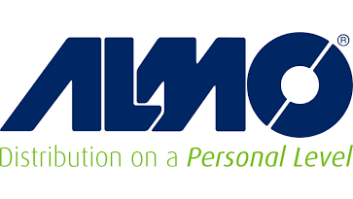Consulting firm Vivaldi Partners recently released a study of the many behaviors of a group they call the “always-on consumer” (or AOC). This study illustrates a drastic change in the way connected consumers discover and engage companies in pursuit of products and services that are relevant to their connected lives. The entire report can be accessed by clicking here.
AOC is the collective term we can use to identify a new customer profile that has emerged in today’s digital, mobile and social world. The AOC owns and uses at least three connected devices, operates them from multiple locations, and accesses them numerous times daily. This probably doesn’t surprise anyone, yet it has not driven the promotional activities in the consumer electronics industry enough to appeal to these hyper-connected consumers. Consider the scale at which connected devices are being used today by this broadening consumer base.
Analyst service provider ComScore estimated in March 2013 that tablets are being used regularly by 48 million people in the U.S., a level at which it took smartphones nearly 10 years to reach. Nielson Research tells us that mobile devices are accessible to nearly 94 percent of consumers in the U.S.
This massive scale is important to remember as we craft our marketing and messaging to this always-on consumer. It’s clear that the AOC represents a much different customer profile than what we’ve ever seen and our traditional methodologies and demographic assumptions are simply not applicable to these connected consumers
So what does this mean to consumer electronics companies and what steps must we take to attract the always-on consumer? Let’s review what Vivaldi Partners discovered about the AOC profile and look at what CE companies and retailers can do to be more relevant in this hyper-connected, digital-driven market.
Connected Beyond Belief
According to Vivaldi Partners, the AOC accounts for nearly half of the total U.S. adult population today. They are better educated than the U.S. average and have above-average annual income. And 71 percent of these consumers use social networks every day.
Viewing screens across multiple devices all of their waking day tells us that we need to be in front of their field of vision. But how do we get there? The answer lies in our ability to understand where the AOC connects with brands and why they do so.
Vivaldi Partners identified five distinct segments within the AOC profile: Social Bumblebees, Mindful Explorers, Deal Hunters, Focused Problem Solvers and Ad Blockers. For the sake of time, I looked closely at all five profiles and determined that three of them have a high potential for understanding and appreciating consumer electronics…and if we connect with them properly and prove our relevance to their connected lives, we can profit from our relationships with them.
• TheSocial Bumblebee: This AOC is a constant social media status updater, is highly opinionated and makes multiple weekly online purchases. Brand loyalty isn’t a strong attribute, but this AOC isn’t afraid to ask for and make purchase recommendations. The sheer “power user” profile of the Bumblebee should be attractive to CE companies and retailers with a limited ad budget and the need to get their messages out in a more viral manner. The danger here is the digital coin-toss of whether you receive extremely positive buzz or will you be torn to pieces online. Social Bumblebees can burn you down as easily as build you up. Your product and services better be good.
• TheMindful Explorer: This is a much more subdued AOC who is more guarded in his/her online presence. The Explorer is your early adopter and thoughtful brand advocate. He/she isn’t a frequent buyer but is more likely to take a brand survey and participate in online forums because the Explorer, more than other AOC’s, views this as an opportunity to offer valuable feedback to brands he/she cares about. Tapping into online forums, in addition to your database of customer e-mail addresses, gives you the opportunity to create an opt-in “brand ambassador” program of owners who can create a sold body of customer-generated content that can be promoted on your website (think of the “write a review” section). Similar types of engagement can earn more trust, collaboration and endorsement from this AOC, which can eventually translate into tangible business.
• The Focused Problem Solver: Fiercely brand loyal, this AOC appreciates the experience of in-store shopping vs. online. When online, he/she is purposeful and is highly likely to take advantage of online banking, travel booking and reservations at restaurants. Email is a more preferred form of communication than social media. CE companies and retailers have seen this customer before; the Problem Solver is an evolved version of the classic semi-enthusiast profile that has been our industry’s bread-and-butter for years. This AOC needs to be engaged, properly qualified and shown the right products and services that fulfill their specific needs, and they will reward you with profitable, repeat business if the initial experience meets their expectations.
What about the other two AOC’s? Looking at their profiles as explained by Vivaldi Partners, these customer profiles suggest that they are very deal-driven and not likely to be sustainable consumer electronics customers (similar to the fair-weather Groupon crowd). While we certainly should not avoid doing business with the “Deal Hunter” or the “Ad Blocker,” our priorities might be better focused on the AOC profiles that are more aligned with the need for the CE industry to cultivate profitable, more sustainable customers.
Getting Started
Several major findings of the Vivaldi Partners report give us clues on how to communicate with and market to these always-on consumers.
1. Connecting with brands and businesses is harder than ever among consumers that extensively use mobile devices, particularly if CE companies and retailers still use traditional marketing and communication tactics. This is because the AOC uses multiple paths to purchase, including peer recommendation, product reviews and the quality of the online discovery experience. Manufacturers should consider de-centralizing their brand management and targeting specific customer segments as defined by AOC segmentation. Retailers need to be more “front-line” than ever, as brand decisions and purchase conversions are made in real-time using connected tools and resources.
2. Brands do not have a “right” to get the attention of the AOC or even to connect with them. Marketers must “earn” the privilege in a collaborative manner with the consumer. Building strong brands in this hyper-connected environment requires a new commitment from CE companies and retailers to engage customers using a strategy of communication “convergence,” which combines social media, online forums, purchase history and mobile data analysis with active tracking of browsing behaviors and possibly even location data. This helps marketers to convert this real-time data into insights, action and feedback that might be highly relevant to the AOC.
3. Consumers have different reasons to engage with brands and thus their willingness to do so varies greatly. Understanding the different profiles of the AOC will help CE companies and retailers tailor their communication efforts to specifically-chosen customers and can result in becoming more relevant to these connected customers. Perhaps this can be as simple as taking each AOC profile and, instead of trying to be “amazing” to that customer, just try to be “useful.” Instead of trying to shape attitudes, let’s influence behaviors by solving real problems for our customers. This cuts through the noise and focuses on the customer as the primary sales channel.
In summary, it is wise for CE companies and retailers to view the AOC as an enormous potential customer base that needs to be understood and leveraged. The AOC clearly does not follow the traditional conventions of demographic marketing — this requires the CE industry to incorporate new methodologies and approaches to understand these connected customers, learn what is important to them and how they discover and engage brands and services. A focus on collaboration, customer experience and real-time tracking of movements should be prioritized by CE companies and retailers alike it they are to gain loyalty, credibility and sustained business with the always-on consumer.
Keith Lehmann is a 30-year veteran of the consumer electronics industry, with executive experience in sales, marketing, technology and management. Lehmann was most recently Executive Vice President of Kenwood USA Corporation and in charge of the company’s consumer electronics sector for over ten years. Today, Lehmann is a consumer electronics industry consultant and advisor to companies, organizations and media outlets.







